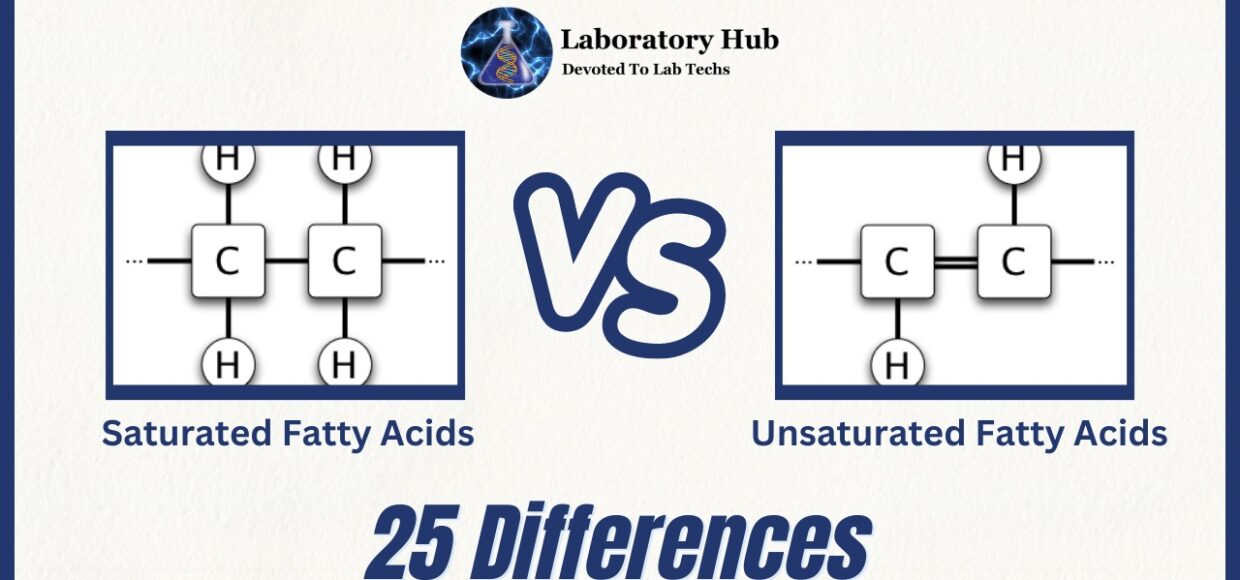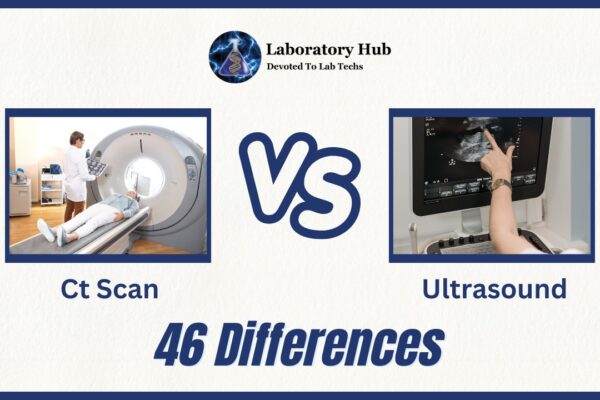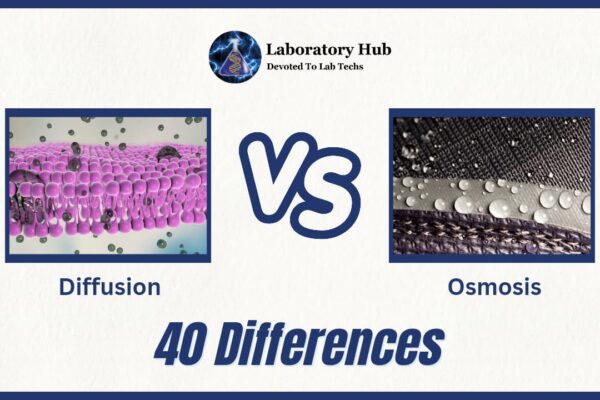Saturated vs Unsaturated fatty acids- 25 Differences
Nutritionists have long debated saturated vs unsaturated fatty acids. Fatty acids fuel our bodies and develop them. They are saturated or unsaturated. Chemical structure determines health impacts. Saturated fatty acids have a straight, rigid structure because their carbon atoms are entirely saturated with hydrogen atoms. They are present in beef, butter, full-fat dairy, and coconut and palm oils. Saturated fats boost LDL cholesterol, which increases the risk of heart disease.
Unsaturated fatty acids feature double bonds in their carbon chains, which kinks their structure. Unsaturated fats are fluid and less dense than saturated fats. Olive oil, canola oil, avocados, and fatty seafood like salmon and mackerel contain them. Monounsaturated and polyunsaturated fats are unsaturated. Polyunsaturated fats have more double bonds than monounsaturated fats.
Research says substituting saturated fats with unsaturated fats can improve health. Polyunsaturated fats lower LDL cholesterol and promote heart health. Omega-3 and omega-6 essential fatty acids regulate brain function, inflammation, and cell development.
Also read: Top 15 Difference Between Serum And Plasma
However, not all saturated fats are equal, and context matters. Some research suggests that dairy fats, which are saturated, may not be as bad for heart health as previously assumed. When examining the health effects of saturated and unsaturated fats, additional dietary components and lifestyle variables should be addressed. As nutrition and health knowledge increase, the argument over saturated and unsaturated fatty acids evolves. However, the full picture is complicated, and more research is needed to understand how various lipids affect human health.
S.No. | Category | Saturated Fatty Acids | Unsaturated Fatty Acids |
1 | Structure | Consist of straight hydrocarbon chains with single bonds. | Contain one or more double bonds in the hydrocarbon chain. |
2 | State at Room Temperature | Solid at room temperature. | Liquid at room temperature. |
3 | Melting Point | Have higher melting points. | Have lower melting points. |
4 | Bond Saturation | Contain only single bonds between carbon atoms. | Contain one or more double bonds between carbon atoms. |
5 | Packaging | Can pack tightly due to straight chains, resulting in solid state. | Cannot pack tightly due to kinks caused by double bonds, resulting in liquid state. |
6 | Source | Predominantly found in animal products, such as meat, dairy, and eggs. | Found in plant-based sources, such as vegetable oils, nuts, and seeds. |
7 | Dietary Intake | Excessive intake may increase LDL cholesterol levels and cardiovascular disease risk. | Replacing saturated fats with unsaturated fats is recommended for heart health. |
8 | Health Effects | Consuming high amounts may contribute to obesity, type 2 diabetes, and inflammation. | Consuming in moderation can have positive effects on heart health and inflammation. |
9 | Dietary Recommendations | Dietary guidelines often recommend limiting saturated fat intake. | Encourage the consumption of unsaturated fats as part of a healthy diet. |
10 | Food Sources | Found in fatty cuts of meat, butter, cheese, and coconut oil. | Found in olive oil, canola oil, avocados, and fatty fish like salmon. |
11 | Stability | Saturated fats are more stable and less prone to oxidation. | Unsaturated fats are more susceptible to oxidation, leading to rancidity. |
12 | Energy Storage | Saturated fats are efficiently stored as energy reserves in the body. | Unsaturated fats can be used as energy sources, but are less efficiently stored. |
13 | Structure of Triglycerides | Saturated fats have three saturated fatty acids attached to a glycerol molecule. | Unsaturated fats have one or more unsaturated fatty acids attached to a glycerol molecule. |
14 | Physical Properties | Saturated fats are less fluid and more rigid. | Unsaturated fats are more fluid and flexible. |
15 | Double Bond Configuration | Saturated fats have no double bonds. | Unsaturated fats can have cis or trans double bond configurations. |
16 | Cholesterol Synthesis | Saturated fats can increase cholesterol synthesis in the body. | Unsaturated fats have little to no effect on cholesterol synthesis. |
17 | Heart Disease Risk | Higher intake of saturated fats is associated with an increased risk of heart disease. | Replacing saturated fats with unsaturated fats can lower the risk of heart disease. |
18 | Effect on LDL Cholesterol | Saturated fats can increase LDL cholesterol levels. | Unsaturated fats can lower LDL cholesterol levels. |
19 | Atherosclerosis | Saturated fats can promote the development of atherosclerosis. | Unsaturated fats can help prevent or slow down the progression of atherosclerosis. |
20 | Trans Fats | Saturated fats do not contain trans fats. | Some unsaturated fats can be artificially hydrogenated to produce trans fats. |
21 | Oxidative Stress | Saturated fats may contribute to oxidative stress in the body. | Unsaturated fats can provide antioxidant properties, reducing oxidative stress. |
22 | Dietary Fiber | Saturated fats are typically low in dietary fiber. | Unsaturated fats can be found in foods high in dietary fiber, such as fruits and vegetables. |
23 | Fatty Acid Chains | Saturated fats have straight and rigid fatty acid chains. | Unsaturated fats have kinks in the fatty acid chains due to double bonds. |
24 | Recommended Intake | Dietary guidelines recommend limiting saturated fat intake to less than 10% of daily calories. | Encourage the consumption of unsaturated fats as part of a balanced diet. |
25 | Trans Fatty Acids | Saturated fats do not contain trans fatty acids naturally. | Trans fatty acids can be present in some unsaturated fats, especially partially hydrogenated oils. |
Frequently Asked Questions (FAQS)
Not all saturated fats are bad. Some research shows that saturated fats from dairy products, unlike those from red meat and full-fat dairy products, may not raise heart disease risk. Health effects depend on food quality and fat balance.
Polyunsaturated fats, especially, are good for the heart. They supply necessary fatty acids and reduce LDL cholesterol. Unsaturated fats should be eaten moderately and in a balanced diet. Portion management is crucial to avoiding weight gain and calorie excess from unsaturated fats.
Unsaturated fats like olive, canola, and avocado oils are excellent for cooking. These oils include heart-healthy monounsaturated fats. Oils are calorie-dense, so use them sparingly and consider their smoke points while cooking. Heating oils over their smoke point creates hazardous chemicals.
Cutting off fats to reduce weight may seem rational, but it’s unhealthy and unsustainable. Fats are necessary for energy, cell function, and vitamin absorption. Healthy fats and quantity management are better than avoiding fats. Long-term weight control requires a range of nutritious meals, including fruits, vegetables, lean meats, whole grains, and healthy fats.
Prioritize unsaturated fats and restrict saturated fats to attain a healthy balance. Plant-based oils, nuts, seeds, and fatty fish can help. Choose low-fat dairy and lean meat. A licensed dietitian can tailor fat balance advice to your circumstances and health objectives.







